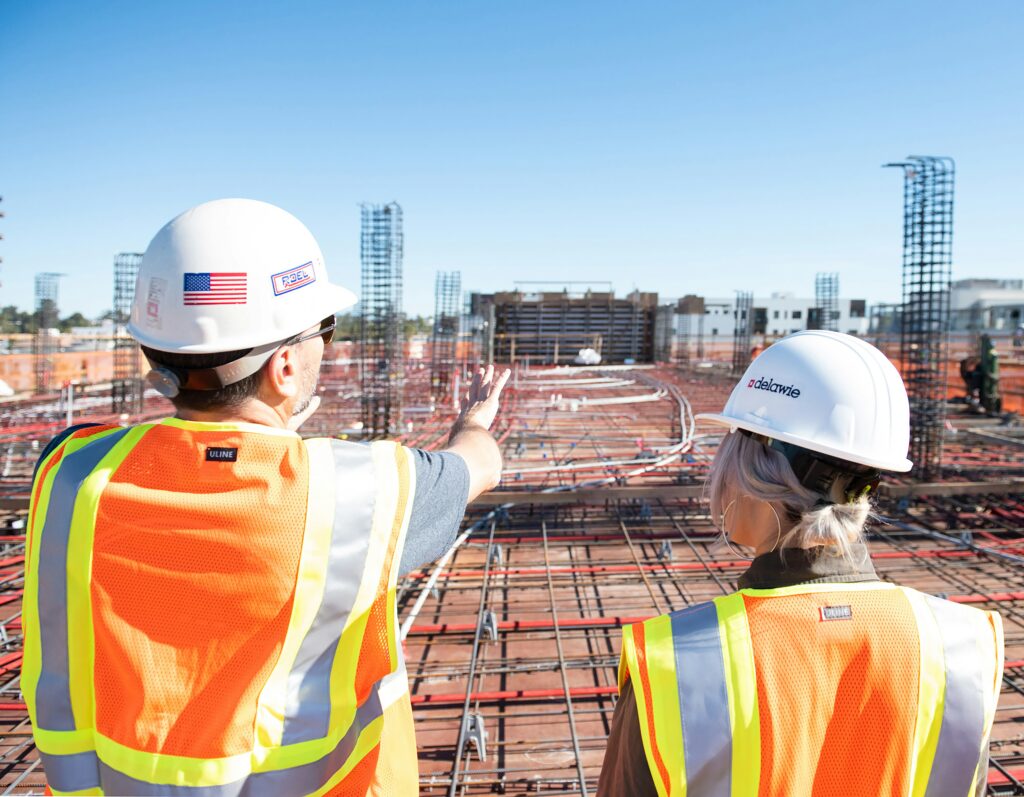Construction Project Management: Planning for Labor Gaps Before the Shovels Hit the Ground
June 27, 2025

Before blueprints become buildings, one thing can make or break your timeline: labor. Even the best-planned construction projects stall when skilled workers are in short supply.
From surveyors and site crews to concrete specialists and foremen, your team needs to be in place before the first shovel hits the dirt.
That’s why labor planning isn’t a step to save for later—it’s where successful projects begin.
Getting Started
When starting a new construction project, there are many considerations—labor is just one of them.
Before a project begins, you must review the scope, budget, location, and availability of skilled workers, especially those with a specific purpose, such as members of an excavating or surveying team. There are also factors like seasonal demand and technological advancement to keep in mind.
To succeed, you must identify the skills necessary for the project, predict future needs, and develop recruitment, training, and retention strategies. Here is why labor planning before project kickoff matters and how to get started.
Understanding Labor Gaps
Labor gaps are common in the construction industry, especially when working on large projects. An Associated Builders and Contractors study reported that contractors across the U.S. faced a shortfall of 546,000 workers, which has since grown.
There are several reasons for labor gaps, including an aging workforce and a shift in economic priorities. Unfortunately, these labor shortages have significant consequences that lead to delayed project timelines and increased costs. Sometimes, a lack of skilled workers can also contribute to safety concerns.
Many construction project managers are finding it hard to fill all roles, and even when they do, projects face delays every time someone leaves. Finding replacements and training them takes time. These high turnover rates can also lead to quality issues that strain budgets.
Strategies for Effective Labor Planning
To plan effectively and optimize labor, you'll want to plan on several tools and techniques.
Here are our suggestions:
- Leverage historical data to identify trends and patterns concerning future needs. Pay close attention to past project performance, turnover rates, and labor utilization. While several variables can alter these patterns, the data will give you a rough idea of your staffing needs and budget.
- Use workforce modeling tools to analyze current capabilities and future needs. These tools can also help identify potential gaps or issues so that you can take proactive action.
- Prioritize cross-functional communication and collaboration, focusing on labor forecasting. Discuss requirements, including skillsets, experience levels, and potential challenges.
Benefits of Proactive Recruitment and Talent Pooling
There are many advantages to being proactive when it comes to recruitment and talent pooling, including the following:
Reduce hiring time and cost of hiring
Having access to a readily available pool of qualified candidates reduces hiring time and costs. Once positions become available, you will already have a pre-vetted talent pool.
Increase candidate quality
Hiring becomes more strategic and organized as companies build relationships with candidates over time. This approach makes finding candidates who fit the company culture and skill requirements easier, resulting in higher-quality hires.
Respond quickly to shifting economic conditions
A talent pipeline will help your construction company adapt, allowing you to scale rapidly and effectively respond to market conditions.
The Role of Temporary Staffing Partners
Hiring can be challenging when managing the complexities of construction projects, and in some cases, the process is rushed, resulting in hiring the wrong candidates. You can work with specialized recruitment agencies to prevent delays and help ensure the right people for the job.
These agencies can help you find temporary skilled workers for large construction projects, providing access to quality candidates and a niche talent pool. Depending on the project's scope, you can scale up or down.
What to Look for in a Staffing Partner
When choosing a temporary staffing partner, consider these points:
- Industry expertise
- Reputation and reliability
- Ability to meet your specific construction-related needs
- Flexibility and scalability
- Ability to build strong relationships with your team
Lay the Foundation for Your Next Construction Project
Having access to a talent pipeline is crucial for those in construction. When you know you have access to skilled construction talent, you can focus on the bigger picture. Whether that means taking on more projects or focusing on the details of those projects, planning for labor gaps today will protect your company tomorrow.
HireQuest can help you build a winning team. Looking for plumbers? Need concrete workers? What about an experienced project manager or a crew of general construction laborers? Whatever your needs, HireQuest will fill in the gaps. Ready to get started? Contact us today!







